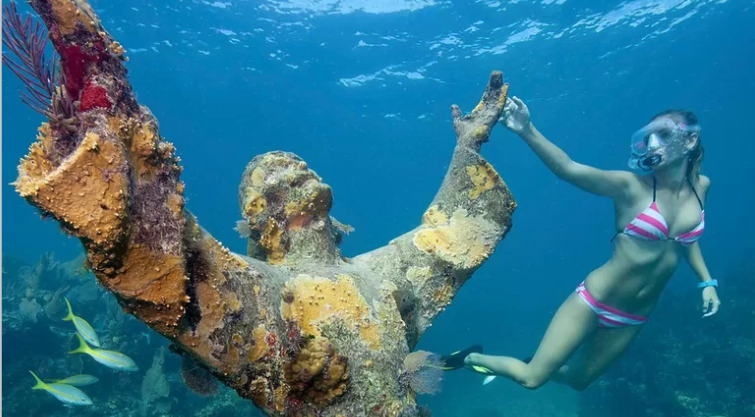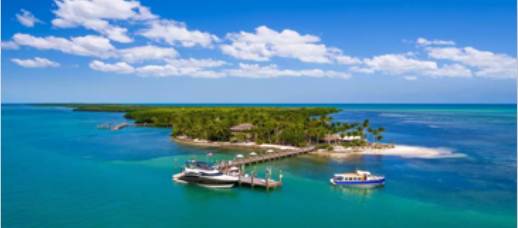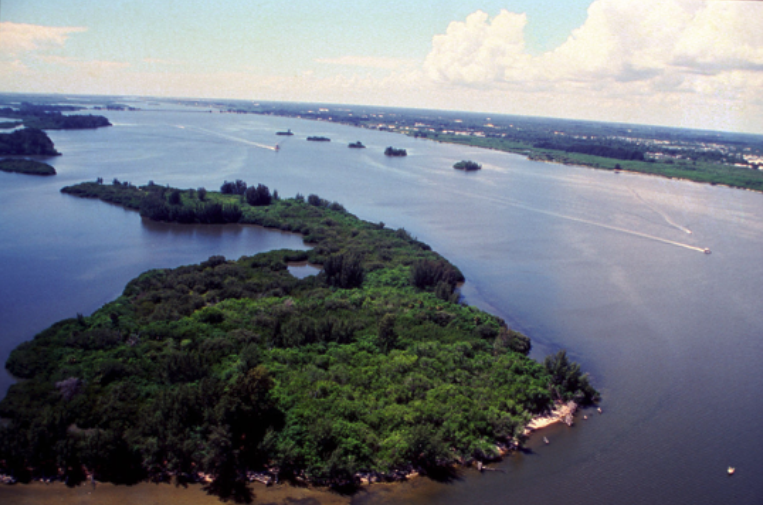Florida Fishing

First off, will you be fishing The Gulf of Mexico, The Florida Keys, or the Atlantic Ocean? Will you be fishing from shore or using a boat to fish from? If you are fishing from a boat will you be fishing inshore or offshore?
All fishing area’s require different tools and techniques to be successful and offer a variety of different fish. The further out you go the bigger the fish get. Seasons, weather, and tides also dictate what fish are available.
“So Many Options, Not Enough Time” is what anglers constantly say in Florida.
Blue Water Fishing
Blue Water Fishing refers to fishing way offshore close to the Continental Shelf in both the Gulf of Mexico, The Keys, and the Atlantic Ocean. In the Gulf of Mexico, you have to go 100 miles or more to get to the edge of the shelf, but in The Keys and along the Atlantic Coast you don’t have to travel far to find the edge of the abyss. This is where you catch huge fish and you need a big boat to get here. Heavy tackle is necessary and lots of bait and chum to draw in schools of large fish. Finding floating debris and sea grass is always an indication of a good place to fish.

Natural Reefs
Natural Reefs and ledges flank the 120 miles of the Florida Keys, Key Biscayne, and half way up the Florida Atlantic Coast crating the second largest reef system in the world behind the Great Barrier Reef. You can fish the shallow inshore patch reefs for Yellowtail Snapper, Mutton Snapper, Grey Snapper, a variety of Grouper, Hog Fish, Mackerel or Kingfish. Further out to depths of 150 feet are larger reef systems with reliefs of 40 plus feet with large caves, ledges, and natural holes providing breeding grounds and shelter for larger fish species.
Shipwrecks & Artificial Reefs
There are more shipwrecks in Florida than anywhere else in the world. Shipwrecks are everywhere on both coasts, both inshore and offshore, so finding one to fish is not hard, you just need the GPS to find them! The Gulf Stream has been for centuries a main shipping channel and many a ship has found misfortune by running aground on reefs or getting caught in hurricanes. Treasures from ships that are hundreds of years old are still being recovered today.

Shipwrecks as we refer to them include intentionally laid wrecks for artificial reefs. Wrecks are not only ships but include submarines, tanks, busses, airplanes, mixing trucks, cargo containers, train cars, or any other large vehicle that would make a good artificial reef.
Large holes or openings in shipwrecks provide homes to many species of fish and breeding grounds. Larger fish swim through shipwrecks in search for food. Fish use the ships for breeding and shelter. Common species caught on shipwrecks include Snapper, Grouper, Mackerel, Hog Fish, Kingfish, Cobia, Shark, and Barracuda.
Islands
There are 1,700 islands within the island chain of the Florida Keys and mangrove islands flank both of Florida coasts, most of which are only accessible by boat. Many barrier islands have interesting sights to see such as abandoned structures that mother nature took from man.

Fishing around barrier islands brings fast and furious action if you time your trip to the tides. Knowing the habitat and behavior of the species you will be targeting helps to identify where you should fish around islands. Decisions such as the tides movement, weather, water temperature, and moon phase are all part of the science of fishing. The science of fishing has no hard facts but as you seasoned anglers know, there is a lot of analysis involved in order to decide where and when to cast our line.
So, when fishing around barrier or mangrove islands, you need to decide if you will fish the pass leading to the island, a point on the island, cast to shore, or beach your boat and fish from land. Are there any deep holes close to shore? Any natural structures like mangrove roots close to shore providing shelter for fish to hole up in during tide changes or to ambush dinner that flows in the tide? Knowing how the species you are targeting reacts to the tides and where they hold up will tell you where to anchor, drop your chum slick, and cast your bait.


Seagrass Beds
Seagrass Beds are located throughout Florida in bays and lagoons and along the continental shelf in the Gulf of Mexico. These fragile environments provide food, shelter, and a nursery for many marine species. Larger species visit the seagrass bed to feed on the smaller fishes and crustaceans that inhabit these areas.
Grouper are commonly found feeding on seagrass beds offshore, so when you encounter a large fish below on your fish finder, you may be over a seagrass bed.
Indian River Lagoon
The Indian River Lagoon is part of one of the longest barrier island estuaries in the United States. This 156 mile long body of water separated from the Atlantic Ocean by barrier islands starts at the Ponce de Leon Inlet in the Mosquito Lagoon and ends at the Jupiter Inlet near West Palm Beach.
This body of water that contains both salt and brackish waters with both temperate and tropical species that coexist and thrive. Five counties border the lagoon and it has three distinct areas: Mosquito Lagoon is the northern most section in Volusia County, Banana River is in Brevard County, and the southern section the Indian River Lagoon which starts in Brevard County and ends in Martin County.
Fishing the lagoons is limitless, from fishing by boat, shore, piers, beaches, kayaks you can fish open waters, inlets, oyster and clam beds, sea grass areas, and barrier islands. Tarpon, Snook, Redfish, and Sea Trout are abundant along with dozens of other species.

